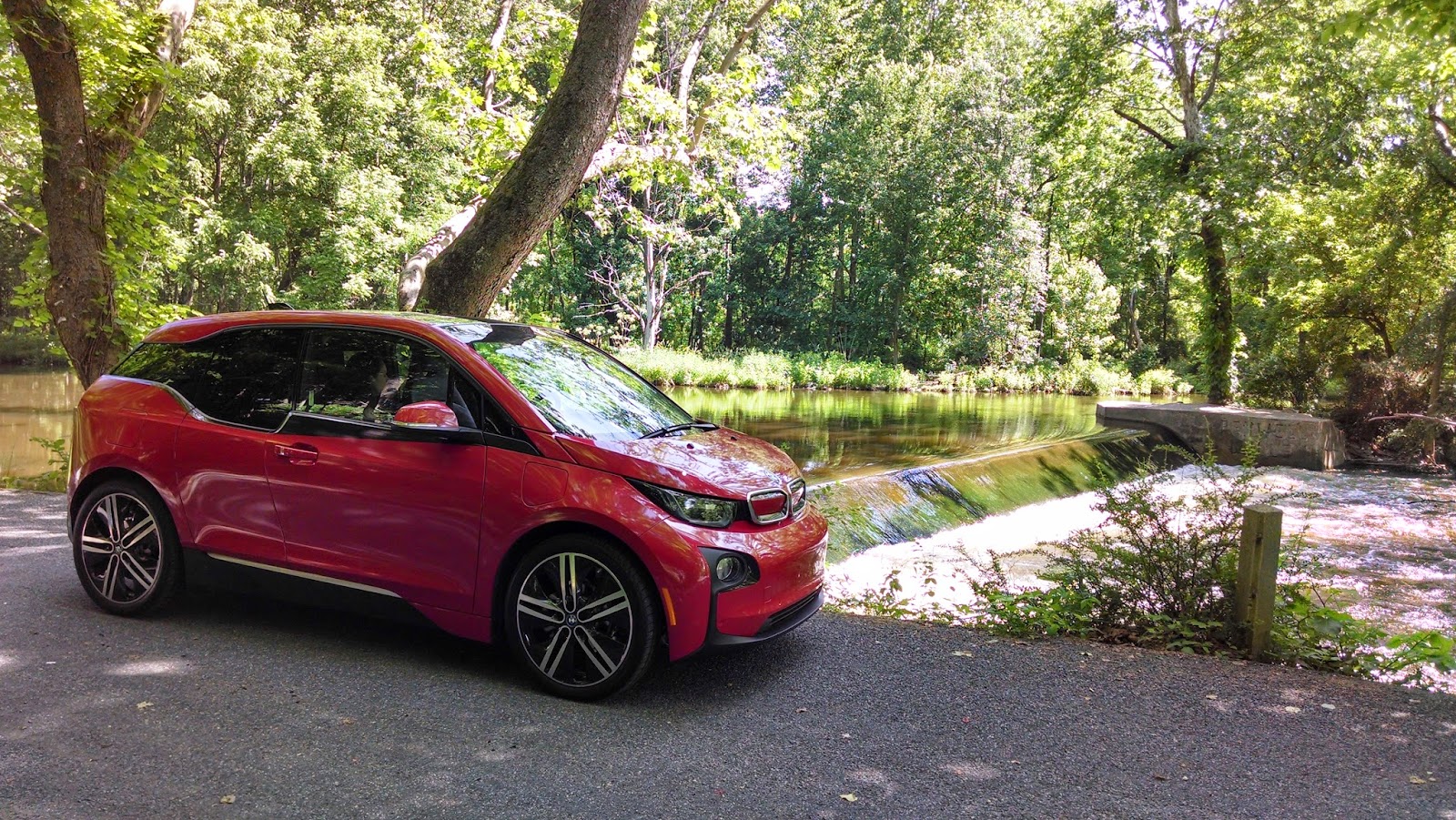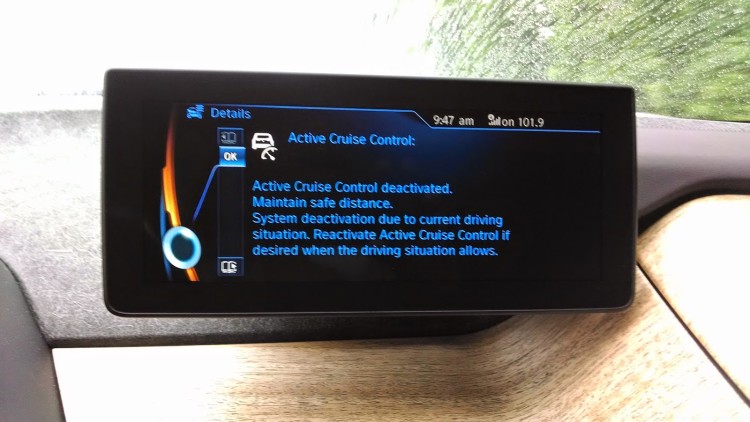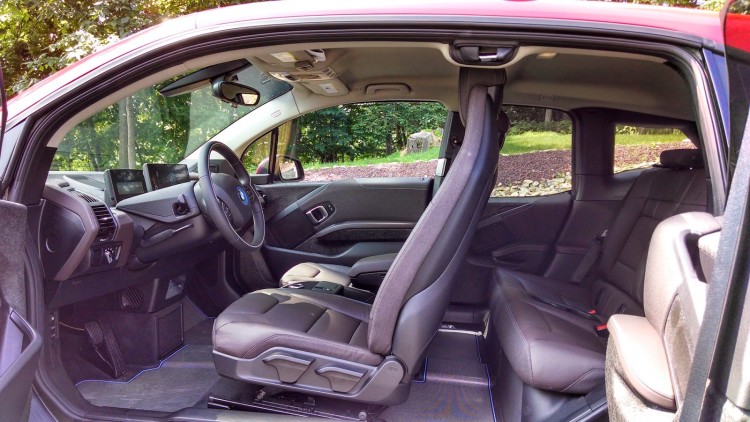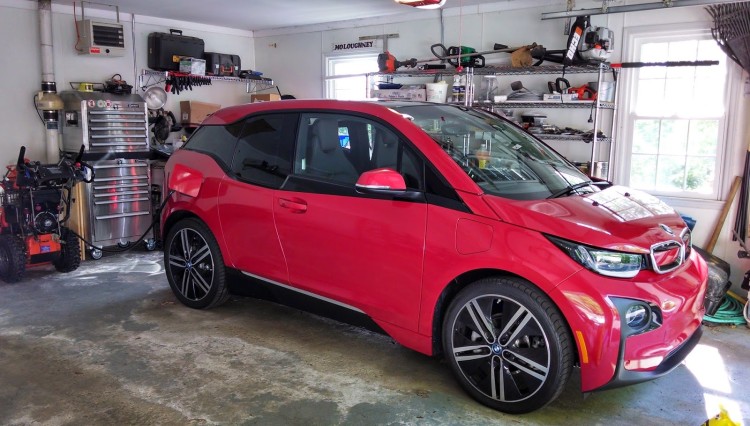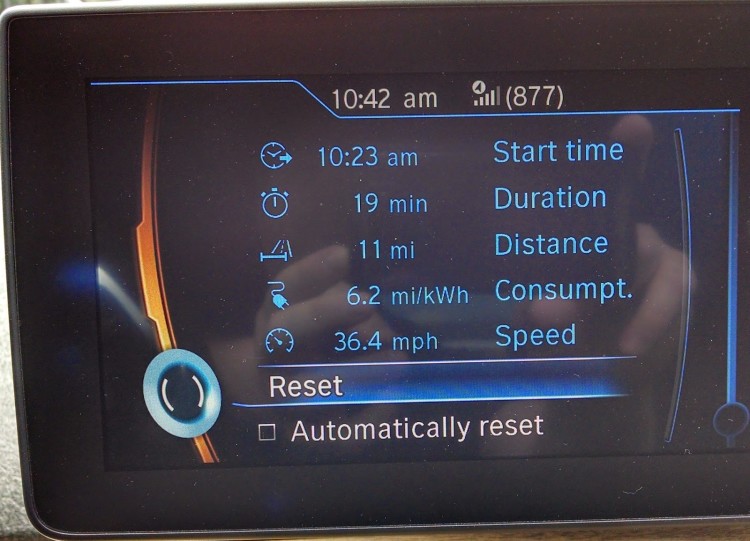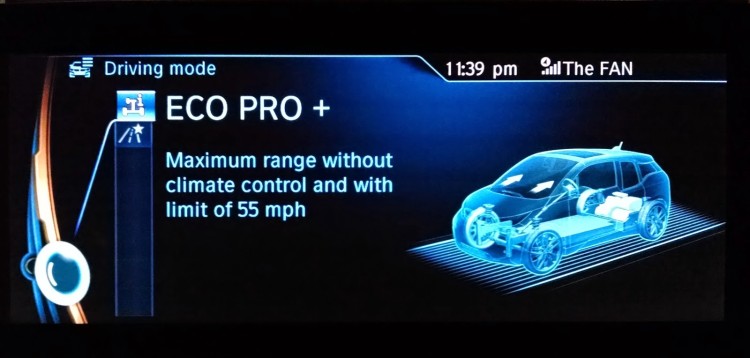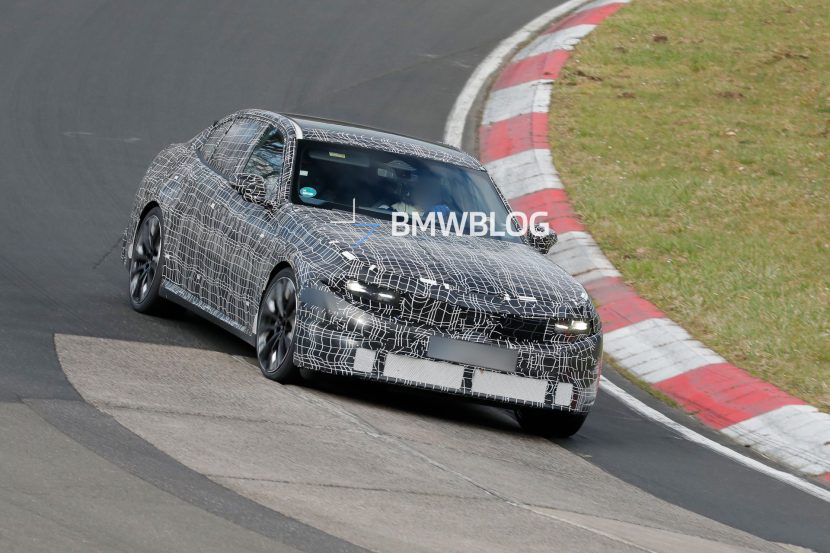Now that I’ve had my i3 for nearly a month, I’m starting to get a good feel for what I like and what I don’t. My initial thought was to do one post with both the likes and dislikes at this point, but after assembling the lists, I realized I wouldn’t be able to spend enough time on each topic if I did it that way.
Therefore I decided I’d do two consecutive posts, with one for the likes and one for the dislikes. I’m tackling the easy one first, the likes:
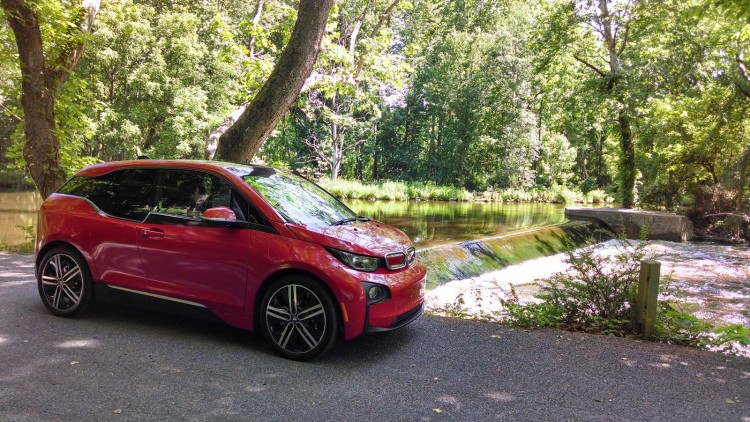
Adaptive Cruise Control With Stop & Go: This feature is really useful. It’s kind of like locking in on the vehicle in front of you with a tractor beam and letting it pull you along. I’ve found it great for both low speed and high speed driving and the car will even come to a complete stop and accelerate again once the car in front of you does. The only things that aren’t perfect is I’ve found it sometimes leaves too large of a gap in between you and the car you are chasing (for safety reasons I guess) but that allows people to easily cut in front of you if they want to. Also, some times it disengages for no apparent reason and when it does that, the car goes into full regenerative braking mode, since you don’t have your foot on the accelerator. It seems to do it more in the rain and also when approaching overpasses. Both could possible confuse the camera-based system. That is not an ideal situation by any means, and something I hope BMW will address with a software update in the future. If the adaptive cruise control does disengage by itself, the car should temporally suspend the regenerative braking until the driver touches either the brake or the accelerator themselves.
This display appears when the adaptive cruise control system automatically disengages.
Seating Position: Like many things in any “likes & dislikes” list, this is highly subjective. The seating position in the i3 is very high, and really “un-sports car like”. It’s actually like sitting in a mini SUV. I like this position and really like the outward vision you get in the car, with lots of glass surfaces and an absolutely huge windshield. The only think I had to get used to was that you cannot see the nose of the car at all. The hood drops off so prominently, it’s impossible to see it from inside the car. After a week of two I was past that though, and feel totally comfortable with not being able to see the nose at all.
The high seating position and the abundance of glass allow for a great outward view.
Charging Rate: One of the advantages of having a small battery in your electric vehicle is that it will charge quickly, provided it has a robust onboard charger. The i3 is supposed to be able to accept up to 32 amps @240V which would be about 7.7kW. I haven’t seen my charge rate quite that high, but I do seem to be pulling about 6.9kW from my home EVSE. That’s good enough to refill a fully discharged battery in about 3.5 hours, or give me roughly 25 miles of range per hour of charging. My ActiveE took about 5 hours to fully charge when it was new, and then when BMW lowered the charge rate due to onboard charger problems, it was taking nearly 7 hours to fully charge. My i3 charges in about half the time it was taking my ActiveE and that makes such a difference for someone like me that does a lot of driving.
Charging at home. The quick charge rate has allowed me to drive 120+ electric miles in the same day without the need of the REx a couple times already.
Cargo Space: For the past five years I’ve been driving BMW’s beta test electric vehicles which were converted gas cars. Both vehicles had severely compromised cargo areas because they were conversions. I use my car to run errands for my restaurant and I’m frequently picking up various supplies. The hatchback cargo area of the i3, especially with the seats down is so much more useful than either the MINI-E or the ActiveE was and I’m so happy to finally have a real purpose built electric vehicle. The battery packaging doesn’t interfere with any of the passenger or cargo space, as it’s located directly beneath the passenger compartment in one large aluminum case. As much as I liked my previous EV’s, the fact that they were indeed conversions did limit their utility.
Delivering a catering order
Picking up some supplies
The Interior: If the unconventional exterior styling has some people scratching their heads, just tell them to open the doors and take a seat inside. The interior is stunningly beautiful, with well laid out instruments and more space than a car of this size ever deserves to have. The tall body and wide stance allows the i3, which is more than a foot smaller than a 1-Series to have nearly as much interior space as a 3-Series. The huge 8.8″ center instrumentation screen is amazingly clear, and somehow doesn’t have a glare problem as I feared it may. The seats are comfortable and the armrest is adjustable so you can set it at the height you prefer. There is plenty of space to store stuff with huge door pockets, each that will hold two beverage bottles. There are two cup holders between the rear seats and two cup holders in the front with a slot for another optional cup holder. In all the car has up to nine beverage holders. I thought German engineers didn’t understand the American obsession to hold drinks in the car?
The “Tera World” interior of my i3
The Efficiency: The i3 is the most efficient passenger car available in the US. So far, according to the data I’m compiling it’s nearly 25% more efficient than my ActiveE was. That means I’m using 25% less energy that the ActiveE which was a pretty efficient EV in it’s own right. I actually did a blog post last week on the subject of efficiency which you can view here.
If you can curb your enthusiasm for the instant torque, the i3 can be an extremely efficient machine.
Comfort Access: OK, so this isn’t really anything related to it being an electric vehicle, but it’s the first car I’ve owned with this feature. You just walk up to the car with the key in the pocket and it unlocks when you grab the handle. Then get inside and just press the start button and it turns on. When you leave you just touch the door handle in a particular spot and it locks. The only think I don’t like about this, which will definitely be mentioned in my “dislikes” post, is the extremely loud beep the car makes when you lock or unlock the doors. It’s ear-piercingly loud and makes everyone in the general vicinity look your way.
The Range Extender: I was on the fence for a long time trying to decide whether to get the REx or not. Once it became evident the BEV i3 wouldn’t have a real 100 mile range that I could depend on, the REx really became a necessary decision. I’d prefer having a 100 mile EV and a good robust fast charge network, but that will take a few more years, at least here in the North East. For now, the range extender concept works perfectly for me. When I first got the car I purposely didn’t charge it so I could fully test the REx performance and it worked even better than I imagined. I did about two hundred miles of driving in REx mode, mostly highway driving at 70 to 75 mph and it was perfectly capable of maintaining the charge. I still haven’t had time to really test it by overworking it until it cannot sustain the charge, but I will. The good news is that I’ll have to actually try to do that, because it is definitely robust enough to do anything I’ll need it to, and that includes 230 mile trips to Vermont. I drive about 30,000 miles per year, and I’m guessing I’ll do about 1,000 miles with the REx running. The one great thing about the REx is not having to think about where I’m going in order to make sure I can plug in if I need to drive a little further than planned. I believe in the near future the range extender won’t be necessary, but with where battery tech and charging infrastructure is today, I believe it makes sense for a lot of people and will certainly help with the adoption of electric vehicles.
Collision Warning: Collision Warning with Brake Priming Function is activated at speeds up to 35 mph. It is able to respond to both moving and stationary vehicles ahead, as well as to pedestrians. If you are rapidly approaching a vehicle or pedestrian, it offers a audible warning and “primes” the brakes so they are ready for the moment you depress the brake pedal. BMW claims this allows for shorter stopping distances. What I really like though is the audible alert. I’ve only had it come on twice so far and in neither time did it actually prevent me from having a collision, but I could definitely see it doing just that under certain circumstances (like distracted driving). It’s definitely a neat safety device and one that I hope all cars have some day.
Hill Hold: If the BMW engineers that are responsible for the hill hold on the i3 are reading this I’d like to say something: Bravo! You nailed it! Electric cars will roll freely forwards or backwards like manual transmission cars do. For the ActiveE, BMW employed the same kind of hill hold feature like they do on their conventionally-powered cars. You needed to depress the brake pedal to activate the hill hold feature, and it would release in a couple seconds. It wasn’t bad, but it wasn’t perfect either. The i3 won’t roll backwards at all unless you put it in reverse, and you don’t need to depress the brake pedal to activate the hill hold, it just does it automatically. However it will roll forward to assist in your launch, which is the way it should be. The hill hold feature doesn’t time-out, and holds the vehicle as long as you need it to. This seems so natural when you drive it, and now that I’ve experienced it I’m wondering why no other electric vehicle manufacturer has come up with this yet. I’m sure they will copy it though.
Soft Speed Limiter: This is another feature that I believe is unique to the i3 and is pretty innovative. Perhaps the biggest range thief with electric vehicles is excessive speed. The i3 employes a unique soft speed limiter to gently remind you that you are driving fast and perhaps you should consider slowing down to extend your range. There are three driving modes in the i3: Comfort (this is what the car defaults to) Eco Pro and Eco Pro +. There is no soft speed limit in Comfort mode, but while driving in Eco Pro and Eco Pro +, the soft speed limits are at 75mph and 55mph respectively. The reasoning behind this is if you are in comfort mode, you likely have plenty of range and aren’t consciously concerned with extending it. However if you selected Eco Pro or Eco Pro +, you likely are concerned with how much range you have and are making an effort to maximize it. Since driving fast is very inefficient, the car coaches you a bit and “reminds” you that you may want to slow down. Here’s how it works: When you reach the speed that the soft limit is set at (75 mph for Eco Pro and 55 mph for Eco Pro +) the car will not exceed that speed, even if you continue to depress the accelerator. In order to go faster, you need to continue to depress the accelerator further and after a couple seconds it realized that you are aware that you’re passing the soft limit but wish to do so anyway, and it will indeed accelerate. It actually takes off rather quickly with an abrupt burst of speed at that point, almost as if to say “Well you asked for it!” I really like this “coaching” feature. There have been plenty of times in my other EVs that I was driving on the highway and wanted to keep my speed down a bit to conserve energy but would find myself creeping up and driving faster than I wanted to without noticing it. With this feature, you really won’t pass the soft limit without really intending to, you can’t do it by accident.
When you activate Eco Pro + mode, you get this display prompting you to keep your speed under 55 mph for maximum range. This lead some people to assume it meant the car wouldn’t go faster than 55 mph in this mode, which is not correct.
Acceleration: I saved the best for last. The i3 is really a blast to drive. I have the REx i3 which is about a half a second slower than the BEV and have been timing myself from 0-60 in around 7.6 seconds. It’s not Tesla fast, but it is a really a quick little car and is much faster and more fun to drive than my ActiveE was. The instant power in the 10 mph to 50 mph range is amazing and feels quicker than my Porsche Boxster did when accelerating at those speeds. This is indeed a fun car to drive, and drives so much better than anyone would expect just from looking at it.
[Source: bmwi3blogspot]


